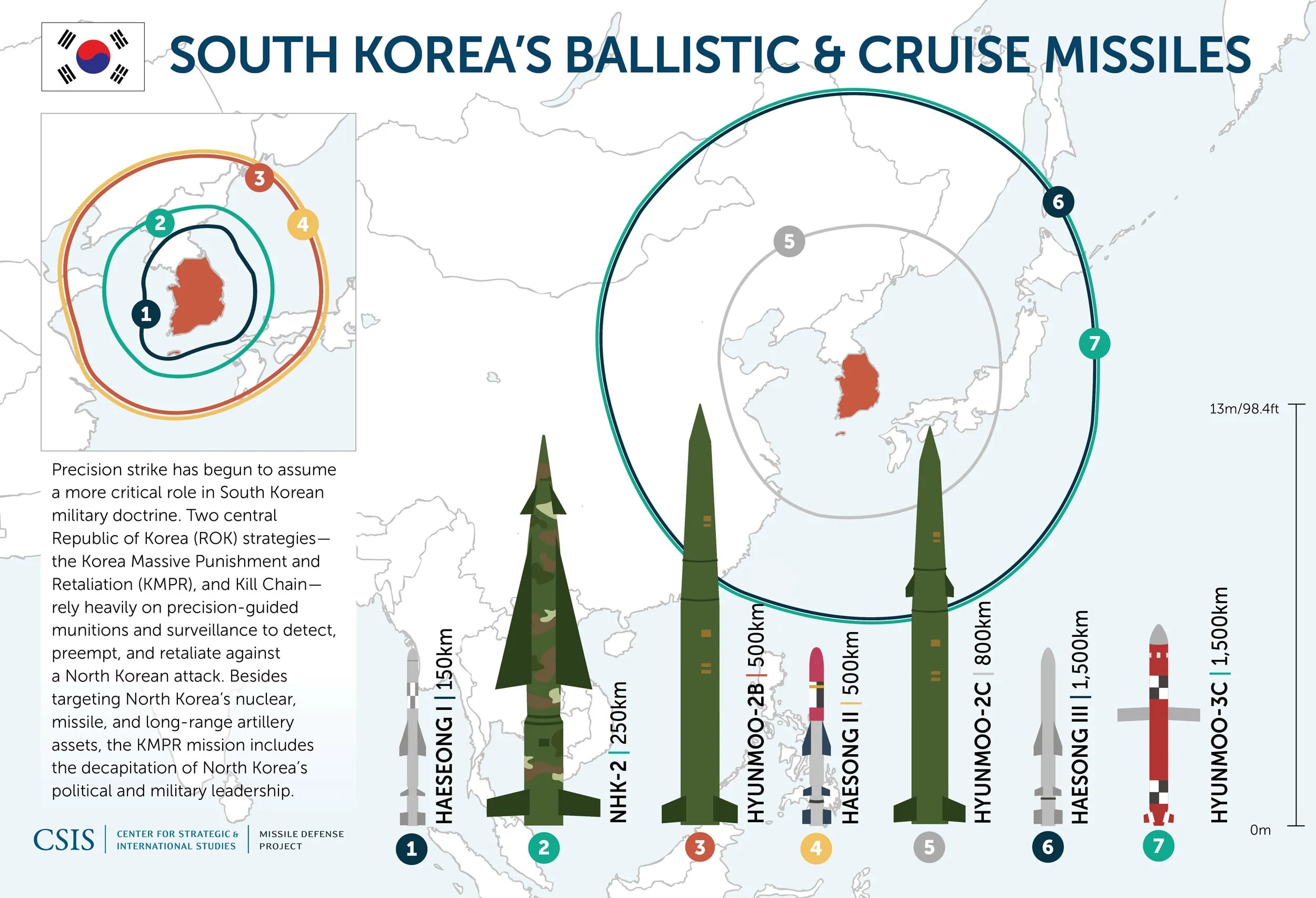For those of you who care about international security – which I presume is pretty much everybody who either writes for and/or reads 19FortyFive – it seems that every time we turn around, the Democratic People’s Republic of Korea (DPRK) aka North Korea has attained yet another milestone in the progression of its ballistic missile program. Their ever-increasing unholy alliance with a revanchist Russia that has been doing its own share of nuclear saber-rattling makes the DPRK’s ballistic developments just that much more disturbing.
However, there’s a flipside to that. Evidently, the Republic of Korea (ROK) aka South Korea, is cognizant of the saying “Two can play at that game,” or as the late WWE professional wrestler-turned-commentator Gorilla Monsoon was fond of saying, “What’s good for the goose is good for the gander.” You see, the ROK’s military isn’t sitting idly by when it comes to ballistic missile development (though granted, in a non-nuclear manner).
The Basics
The news comes to us from a decidedly non-mainstream South Korean media outlet by the name of Gang-Nam Times aka kangnamtimes, which is presumably named for the song by South Korea rapper Psy and describes itself as “the origin of the K-pop community and delivers the hot trend news of Korean entertainment.”
The relevant article, titled “Monster Missile Revealed to Take Down Kim Jong Un’s Bunker,” penned on September 27, 2023, by a staff writer beating the pseudonym “moneytoday.” The most relevant snippet of the article reads as follows:
“President Yoon Suk Yeol stated, ‘If North Korea uses nuclear weapons, the North Korean regime will be terminated through the overwhelming response of the U.S.-South Korea alliance’ … In addition, the military is also planning to reveal the ‘high-powered ballistic missile’ to the public through the parade. The high-powered ballistic missile displayed is known as ‘Hyunmoo-4’. The Hyunmoo-4, whose specifications have not been revealed, was created after the request to lift the missile warhead weight limit in Korea was accepted through a phone call between the U.S. and South Korean presidents following North Korea’s 6th nuclear test on September 3, 2017. The Hyunmoo-4 is estimated to have 2-3 times the destructive power and underground penetration capability of the GBU-28, a laser-guided air bomb of our Air Force, and the ‘GBU-57’ (also known as the bunker buster).”
According to Masao Dahlgren, associate fellow with the Center for Strategic & International Studies (CSIS) Missile Defense Project, the Hyunmoo-4 reportedly packs a payload of 2 tons and possesses a range of 800 kilometers (497.07 miles).
Historical Comparison with Other “Bunker Busters”
For a sense of perspective, it’ll be interesting to see how the L-SAM’s specifications compare to other bunker-busting weapons.
Those of us who are from Generation X and later generations, when hearing or reading the terms “bunker busters,” will think of the “Daisy Cutter,” and might be inclined to assume that it was first used against the Taliban and Al Qaeda cave networks in Afghanistan during the early phases of Operation Enduring Freedom in 2001.
But a perusal of the National Museum of the United States Air Force info page reveals that the Daily Cutter – official designation Bomb Live Unit (BLU-82/B) – was actually first used during the Vietnam War, more specifically on March 23, 1970, as part of a U.S. Air Force operation known as “Commando Vault.” They were used again during Operation Desert Storm in 1991, with the 8th Special Operations Squadron dropping 11 BLU-82/Bs, primarily for psychological effects. As the Daisy Cutters were too large to fit in the bomb bay of any actual heavy bombers in the USAF arsenal – even the mighty B-52 – they were instead dropped from C-130s.
The Daisy Cutter weighs 15,000 lbs. (2.5 tons).
Going farther back in history, namely to WWII, you have the 22,000-lb. (11-ton) Grand Slam Earthquake bombs, which remain to this day the heaviest bomb in the world. These were used in the final year of the war – 1945 – and were dropped by Royal Air Force (RAF) Bomber Command Avro Lancaster warbirds against strategic targets such as bridges and viaducts, railways, and U-boat pens.
So, in short, both the Daisy Cutter and Grand Slam alike are heavier in terms of payload than the Hyunmoo-4. However, the Korean missile has the advantages of being unmanned and having precision-guided standoff attack capability. By contrast, those two older Western-made pieces of ordnance are unguided gravity bombs aka “Dumb Bombs” that require risking the lives of human aircrews in order to get close enough to drop the payload on target.
Concurrently Developing ROK Military Capabilities
The Hyunmoo-4 isn’t the only piece of highfalutin ordnance that the ROK’s armed forces are making known to friends and foes alike. According to the Gang-Nam Times article, in that same parade that commemorated the 75th anniversary of South Korea’s Armed Forces Day, the military also showcased the Long-Range Surface-to-Air Missile (L-SAM) to the public for the first time; this weapons system is described as “the core of the Korean-style 3-axis system (Kill Chain, Korean-style missile defense, Korean-style massive retaliation).” Reportedly this missile will have a range of 150 kilometers (93.2057 miles) and be capable of intercepting missiles at altitudes between 40-60 km (~24.85-37.28 miles).
Christian D. Orr is a former Air Force Security Forces officer, Federal law enforcement officer, and private military contractor (with assignments worked in Iraq, the United Arab Emirates, Kosovo, Japan, Germany, and the Pentagon). Chris holds a B.A. in International Relations from the University of Southern California (USC) and an M.A. in Intelligence Studies (concentration in Terrorism Studies) from American Military University (AMU). He has also been published in The Daily Torch and The Journal of Intelligence and Cyber Security. Last but not least, he is a Companion of the Order of the Naval Order of the United States (NOUS).

